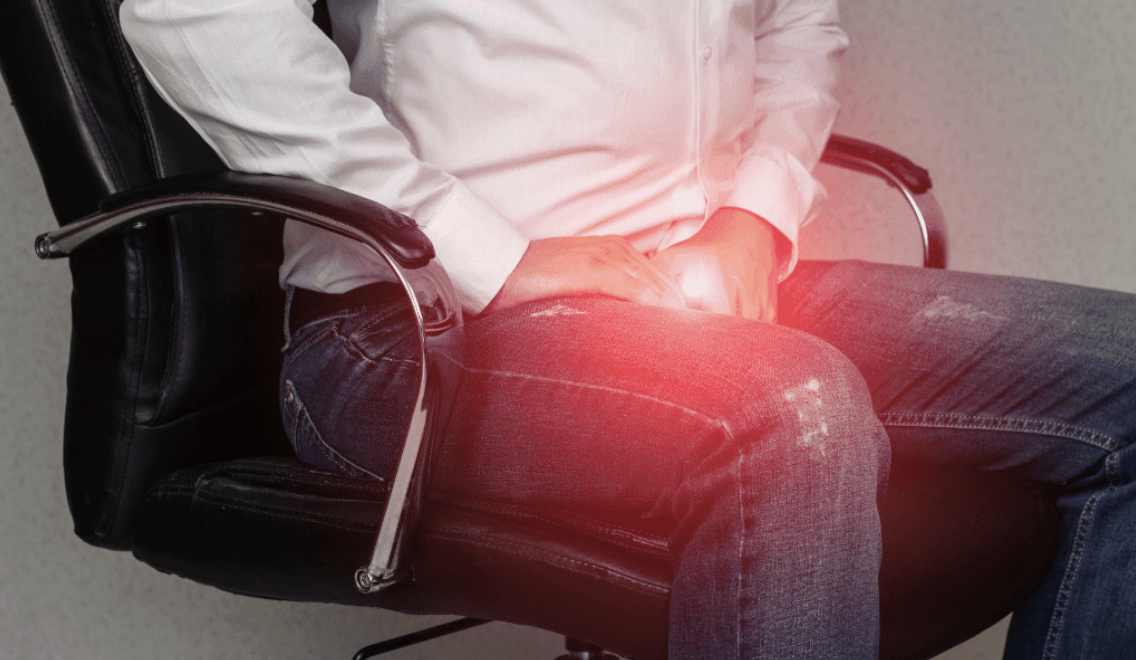If you lead an active life or work on your feet, you may experience minor aches and pains frequently. You may postpone seeking medical attention for this discomfort, thinking it will disappear if you wait a little while. Knee pain is a common issue and can affect people of all ages. Due to the complex nature of the knee joint, it is prone to several injuries that may occur gradually during sports activities or other physical exertions.
Dr. Janice Fisher and the Bioregeneration Integrated Medical Centre team offer drug-free, minimally invasive ways to manage pain and accelerate healing through regenerative medicine. We are experts in administering Platelet-Rich Plasma (PRP) injections, stem cell therapy, and Platelet-Rich Fibrin (PRF) treatments to ease pain and inflammation and promote healing.
Ignoring knee discomfort may be tempting, but enduring pain or weakness is unnecessary. This article will discuss when you should consider seeing a doctor for knee pain.
Signs that You Should See A Doctor For Knee Pain
✖ Trouble Walking
If your knee pain becomes so severe that it causes a limp or makes walking difficult, consult a doctor. Such intense pain could indicate a bone injury or a degenerative condition.
✖ Unstable Knee
If your knee seems wobbly or feels like it might give out, get medical help. Typically, joint instability suggests a ligament issue, which could worsen if you continue using your knee normally.
✖ Redness or Swelling around the Joint
Similar to knee joint deformity, your knee’s shape, and color changes can signal severe issues. These signs could indicate an infection. If you detect redness or swelling, gently touch the area to determine if it’s tender or warm.
✖ Persistent Pain or Discomfort
If your pain doesn’t subside despite waiting it out, consult a doctor. Generally, athletes should seek medical advice for pain lasting over 48 hours, while other adults should consult an expert if the pain remains unchanged for three weeks.
✖ Pain Disrupting Sleep
Many people with knee problems struggle to fall or stay asleep due to pain. If your knee pain affects your sleep, seek assistance.
✖ Inability to Bear Weight
When standing up, do you feel the urge to shift your weight away from your painful knee? This sign may point to various knee conditions that require medical attention. If the affected knee can’t support your weight, schedule a visit to see your doctor..
✖ Joint Deformity
Compare your knees side by side. If the affected knee looks distorted compared to the healthy one, you might have a fracture, a dislocated kneecap, or a patella injury.
✖ Diminished Knee Sensation
While many knee problems cause pain, the absence of pain can also signal a serious health issue. If you experience leg or knee pain that does not worsen when you apply pressure to the knee, it could result from sciatica or another condition unrelated to the knee.
✖ Pain Interfering with Daily Activities
Most healthcare providers advise scheduling an appointment when you notice your symptoms affecting your daily life. If knee pain disrupts your commute, makes jogging uncomfortable, or hinders your work, have a professional assess the joint.
✖ Limited Range of Motion
If you have an injured knee, you may experience internal swelling that can limit your ability to fully bend or straighten your leg. If you experience a reduced range of motion lasting more than 24 hours, it’s essential to consult a doctor.
If you exhibit any combination of the abovementioned symptoms, seek medical advice. For minor or infrequent symptoms, consult your primary care physician first. They can help you decide whether to see a specialist. If you observe a sudden change in symptoms or experience high-intensity symptoms, arrange an assessment with a knee expert, particularly if you’re an athlete. In case of extreme symptoms, such as high fever, seek emergency medical attention immediately.
What Can Cause Knee Pain?
Knee Osteoarthritis
Osteoarthritis often affects the knees and usually results from wear, tear and aging. Women over 55 are more likely to develop knee osteoarthritis than men. Osteoarthritis is more prevalent in overweight individuals, and genetics can also contribute to its development. Additionally, those who regularly lift heavy weights or athletes with prior knee injuries are at a higher risk. If the patient is overweight, the doctor may initially recommend weight loss. The goal of treating osteoarthritis is to reduce pain and improve mobility.
Knee effusion
Knee effusion can result from any injury or inflammation of the knee. Arthritis, including rheumatoid arthritis, osteoarthritis, and psoriatic arthritis, is commonly associated with knee effusion. Additionally, gout can also cause knee effusion. Usually, your doctor will prescribe medications to decrease the swelling caused by a knee effusion. Surgery is typically not necessary to address the swelling. If your knee does not show improvement with medication, your doctor may recommend steroids or injections.
ACL Strain or Tear
The knee is stabilized by the anterior cruciate ligament (ACL). This ligament connects the thigh bone to the shin bone and can be damaged by a sudden twisting motion, making it a common injury for athletes. Severe ACL tears are highly complex and often necessitate reconstructive surgery to replace the torn ligament.
Your doctor will conduct an exam to determine the severity of the tear. Some ACL injuries can be treated non-surgically. Your doctor will likely recommend reducing your activity (possibly wearing a brace) and participating in physical therapy. Additional treatments may also be suggested.
Meniscus tear
This happens when the rubbery disc that cushions your knee gets damaged. Each knee has two menisci—one on each side. They help stabilize your knee by distributing your weight across the joint. Meniscus tears are caused by a rapid twist or turn, typically with the foot planted on the ground.
Tears become more frequent with age. Meniscus tears come in three varieties: minor, moderate, and severe. Minor tears cause pain and swelling that usually subsides within a few weeks. Moderate tears result in swelling and stiffness, potentially accompanied by sharp pain during knee movement.
If a tear in the knee is severe, it can make the knee unstable and increase the chances of it giving way suddenly. You may also hear a “pop” sound when bits of the torn meniscus move inside the joint. The treatment for meniscus tears will vary based on the severity of the tear, your age, activity level, and other factors. Your doctor may suggest rest, physical therapy, or arthroscopic surgery. The surgery is minimally invasive, with a typical recovery time of four to six weeks.
Knee Bursitis
Knee bursitis occurs when the bursa, which are tiny fluid-filled sacs that reduce friction and provide cushioning, become inflamed. People who kneel for extended periods (e.g., gardeners, plumbers) or participate in certain sports are at an increased risk of developing knee bursitis.
Treatment for knee bursitis can involve:
Taking a break
Undergoing physical therapy
Receiving a corticosteroid injection
Having aspiration (a method of draining excess fluid)
Surgery is only considered a last resort for those who have persistent bursitis or don’t respond to other treatments.
Patellar Tendonitis
Patellar tendonitis is a common condition that involves inflammation or injury of the tendon that connects the kneecap (patella) to the shin bone. It often occurs due to repetitive knee impacts, such as playing sports (especially those involving a lot of jumping), performing household activities, and more.
The condition is most commonly observed in middle-aged adults since tendons lose elasticity. Your doctor may recommend avoiding activities aggravating the tendon and resting your knee. Applying ice to the joint can also provide relief. Your doctor may recommend stem cell injections, corticosteroid injections, or physical therapy for more severe and persistent pain.
Can Regenerative Medicine Help Alleviate Knee Pain?
Regenerative medicine is an exciting and rapidly advancing field of medical research that offers significant potential for treating various conditions, including inner knee pain. One promising regenerative medicine treatment for pain is PRP therapy.
This therapy involves injecting a concentration of platelets from your blood into the affected knee. These platelets release growth factors that promote healing and regeneration of damaged tissue, which can help to alleviate pain.
Regenerative Medicine Treatments for Knee Pain When Bending Available in Kingston and Montego Bay, Jamaica
Are you considering a non-surgical solution to ease or manage your knee pain?
Talk with the Bioregeneration Integrated Medical team to see if you are a candidate for our regenerative medicine treatments.



